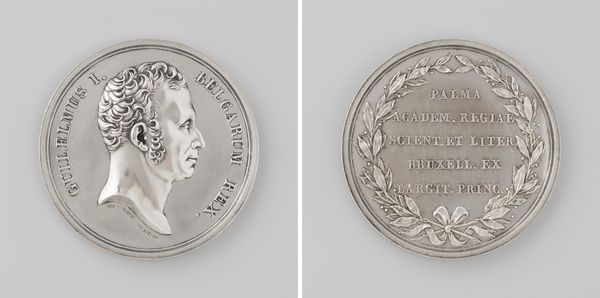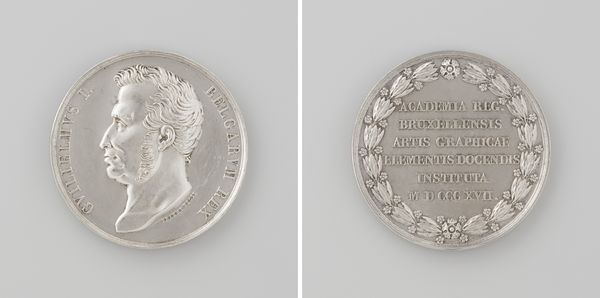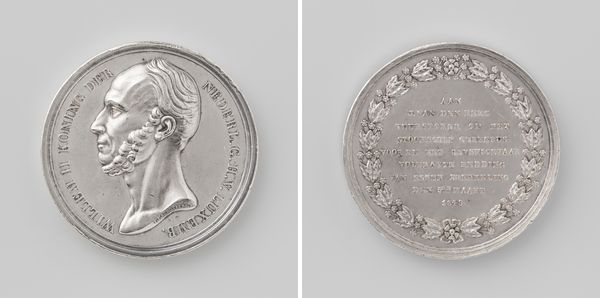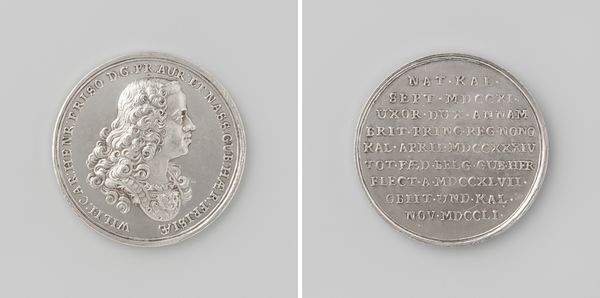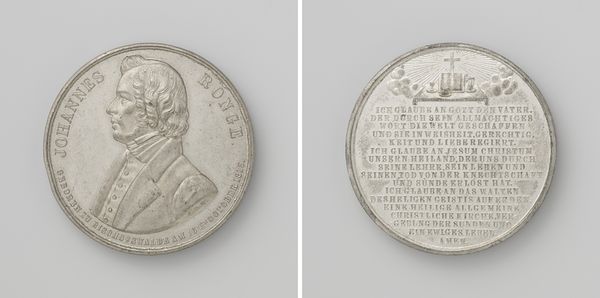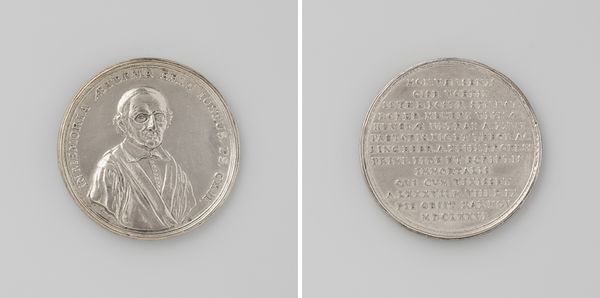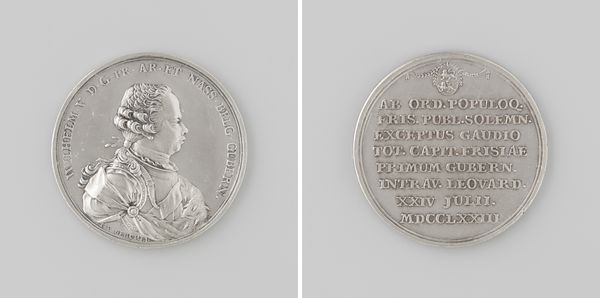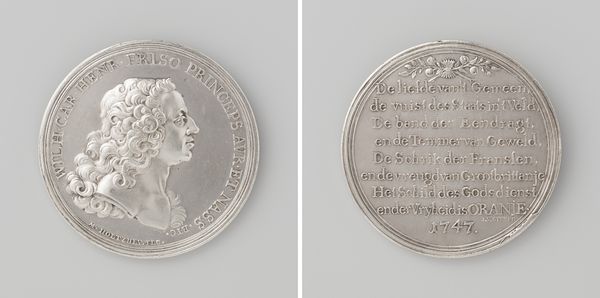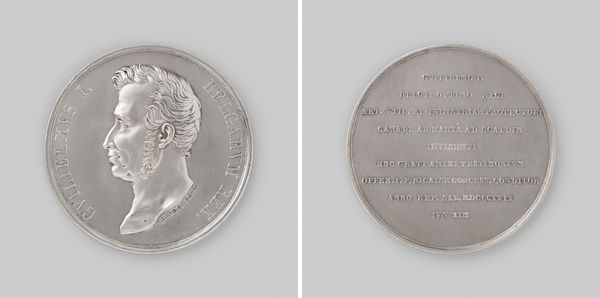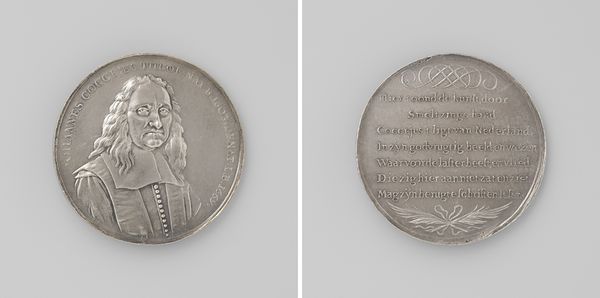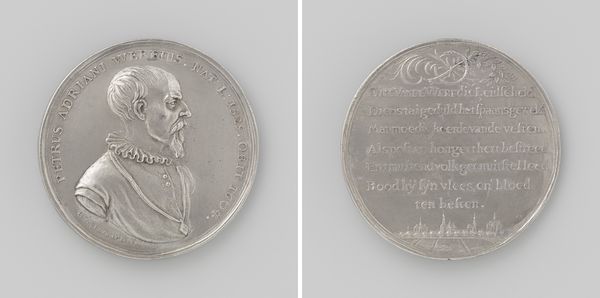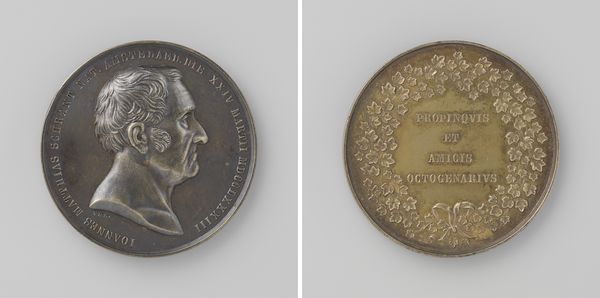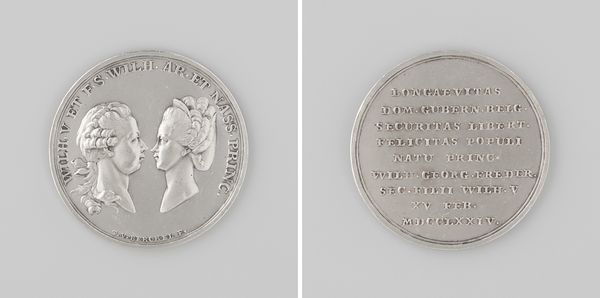
Matroos P.C. Bakker, wegens het redden van een drenkeling uit de Suriname-rivier, ter ere van Willem III, koning der Nederlanden 1849
0:00
0:00
metal, relief, sculpture
#
portrait
#
neoclacissism
#
metal
#
relief
#
sculpture
#
history-painting
#
academic-art
Dimensions: diameter 5 cm, weight 66.10 gr
Copyright: Rijks Museum: Open Domain
Curator: Looking at this relief made of metal, it immediately strikes me how clean and classical it looks, almost like a Roman coin but on a larger scale. Editor: Indeed. This piece, crafted by David van der Kellen in 1849, is a medal commemorating Matroos P.C. Bakker’s courageous rescue of a drowning person from the Suriname River, honoring Willem III, King of the Netherlands. Curator: The royal figure immediately evokes a sense of established authority. The laurel wreath too speaks of an act that is seen worthy of honour. I think the message here is very simple: valor in service of another. Editor: Absolutely, the symbols tell a straightforward story. In Western iconography, we see the use of laurel wreaths dating back to ancient Greece, almost always signifying victory or triumph, co-opting it into a medal recognizing civil bravery definitely links that symbolism for heroism with political prestige. It is the political prestige conferred on the individual by the state, and in the broader social sense by their own community as well. Curator: That interplay is especially interesting. These medals really reflect the power structures and societal values of the time, using the figure of the monarch, which at that time and place was heavily influenced by enlightenment thinking, and even invoking a sense of neoclassical virtues. The very form is political as an act of awarding civil bravery. Editor: Exactly, and I am also struck by the decision to focus only on symbolic representations rather than depicting the rescue directly. I wonder, was this partially out of aesthetic concerns or does that aesthetic choice imply this event is already well known and this artifact is commemorative of the deed. Curator: Probably a bit of both. The visual vocabulary had to reflect civic pride rather than, let's say, documentary accuracy. So the symbolic value in making civil heroism an example or teaching the citizenry is clear here. Editor: Indeed. Analyzing an artwork like this opens a window into the historical perspectives on civic duty and heroism and, most specifically, state sanctioned honor, as interpreted by van der Kellen, during that era.
Comments
No comments
Be the first to comment and join the conversation on the ultimate creative platform.
